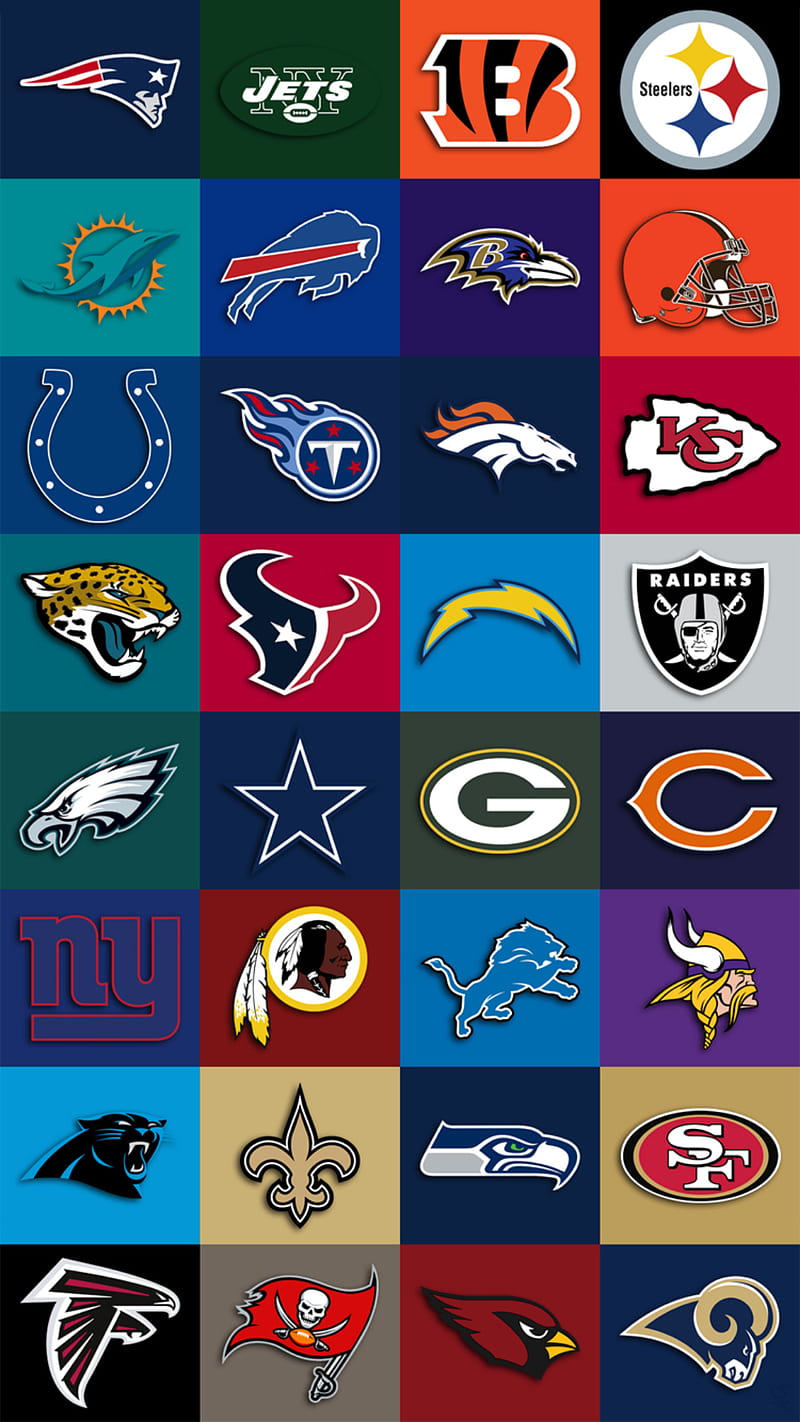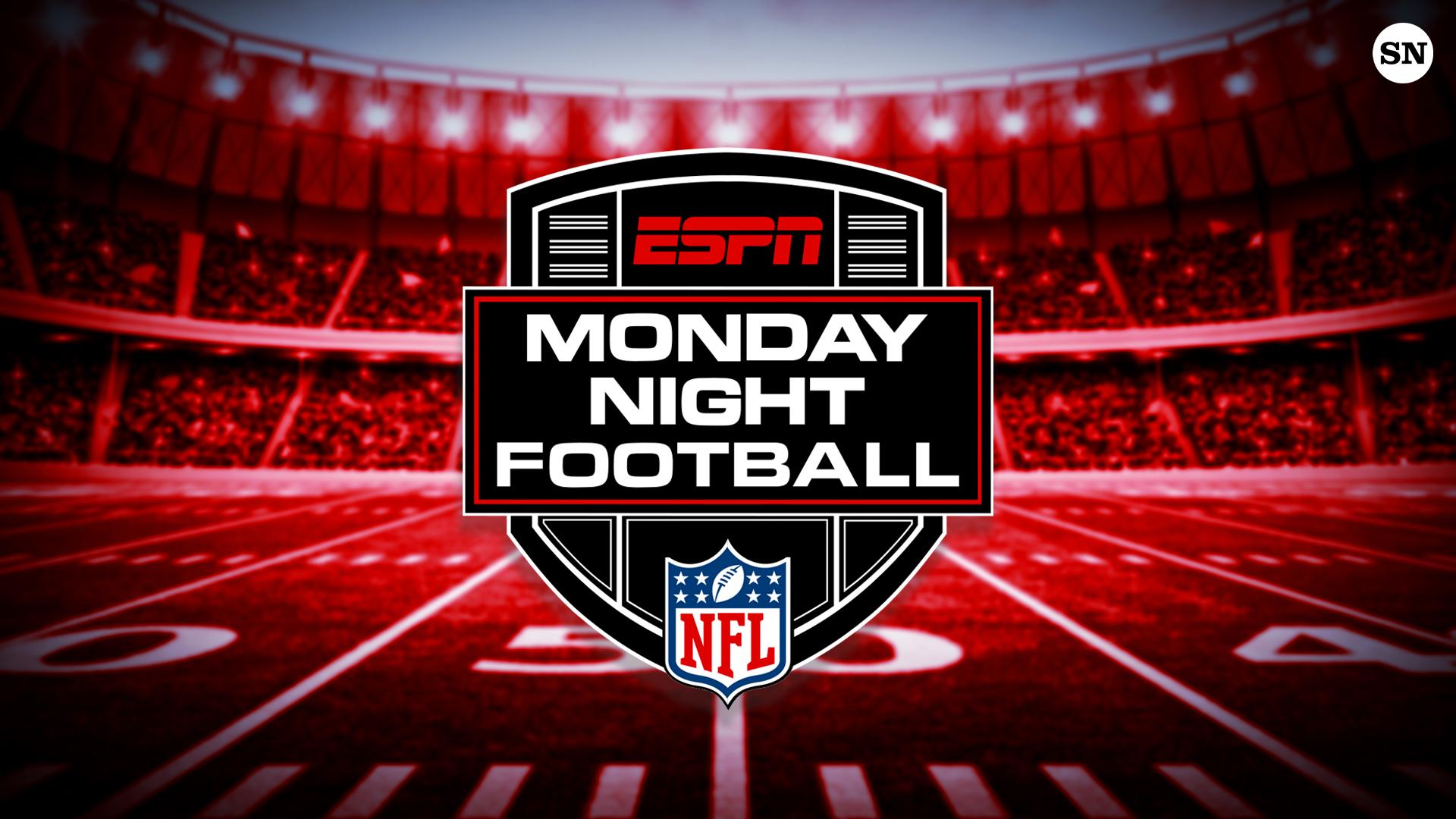What is the significance of this professional American football league? A global spectacle of athleticism and strategy.
This league, featuring teams representing various cities across the United States, embodies a unique blend of physical prowess, strategic planning, and fervent fan support. It's a professional sport, involving highly-trained athletes competing in a structured competition. Teams strive for dominance in a season-long pursuit of a championship title.
The league's enduring popularity stems from several factors. High-stakes games, dramatic comebacks, and intense rivalries captivate audiences, both in person and through media coverage. The immense athleticism on display, the strategic depth of the game, and the national appeal contribute to its global recognition and sustained interest. Historically, the league has evolved significantly, adapting to changing societal values and showcasing its capacity for progress and innovation. It's more than just a sportit's a cultural phenomenon that unites communities, inspires millions, and influences popular culture.
The following sections will delve into specific aspects of the league, including its history, rules, and current state.
NFL Football
The National Football League (NFL) is a major professional sports league in the United States. Understanding its key aspects is crucial for appreciating its significance.
- Competition
- Teams
- Players
- Strategy
- Fans
- Culture
The NFL's structure emphasizes intense competition between teams, each with unique strategies. Successful teams are built on talented players. Fan engagement is integral to the sport's cultural impact. The intricate strategy involved in play-calling and player deployment is a critical element. The NFL's global presence, evident in the fan bases of numerous teams, demonstrates the game's broad cultural appeal. The NFL's legacy is deeply intertwined with the values of dedication and teamwork emphasized in the sport.
1. Competition
Competition is fundamental to the National Football League (NFL). The structure of the league is predicated on a system of consistent challenges between teams, fostering intense rivalry and driving consistent improvement. Success hinges on consistently surpassing rivals, demanding meticulous preparation and strategic adaptation. The competitive landscape forces teams to constantly evaluate and refine strategies, leading to a dynamic and evolving game. This relentless pursuit of victory, evident in the season-long battles, highlights the importance of tactical acumen and player resilience. The playoffs, with their knockout format, amplify this competitive spirit, culminating in a single champion.
The competitive nature of the NFL extends beyond the field. The league's financial structure relies on competitive bidding for players, creating a complex market dynamic. Teams consistently strive to assemble the most talented roster possible, often driving salaries and compensation upward. This competitive pursuit of talent fuels player development, pushing players to enhance their skills and reach new levels of performance. The subsequent media coverage and fan engagement amplify the impact of this competition, translating the on-field struggle into a cultural phenomenon.
Understanding the critical role of competition in the NFL provides valuable insights into the league's structure and success. The relentless pursuit of victory, coupled with the sophisticated strategic and financial components, underscores the league's ongoing evolution. The constant striving for improvement, spurred by competition, ultimately shapes the sport's enduring appeal and influence on popular culture. This understanding also reveals the importance of meticulous planning, adaptability, and resilience in both the players and teams.
2. Teams
Teams are the fundamental building blocks of the National Football League. The league's structure hinges on the existence of these organized entities, each representing a specific geographic area or city. This geographical representation is crucial, connecting the sport to local communities and creating a sense of shared identity. Successful team performance directly impacts the economic well-being of the associated city and its surrounding area, creating a symbiotic relationship between sporting success and community prosperity. The very essence of the NFL rests on these competitive entities, each striving for success in a rigorously structured season.
The importance of team dynamics within the NFL cannot be overstated. Team cohesion, both on and off the field, significantly impacts performance. Effective leadership, strong player relationships, and a shared commitment to team goals are critical for success. Successful teams cultivate a unique culture, characterized by a distinct style of play and a dedicated fan base. Examples abound of teams that have experienced periods of dominance and those that have struggled. Analysis of these varying outcomes reveals patterns in team structure, player acquisitions, and coaching philosophies. Understanding these factors is essential to analyzing the intricacies of the NFL and the impact of team elements on overall success and fan engagement. The strength of the team unit directly affects the collective performance and overall outcome.
In conclusion, teams are not simply components of the NFL; they are the very heart of the league. Their success depends on a complex interplay of factors, from player performance to team management. The strong connection between teams and success is undeniable, influencing not only the sporting outcomes but also the economic and social well-being of the communities they represent. A deeper understanding of team dynamics, strategies, and structures provides crucial insights into the NFL's overall functioning and enduring appeal.
3. Players
Players are the lifeblood of the National Football League (NFL). Their individual skills, combined with team dynamics, directly influence the league's outcomes. Understanding the multifaceted role of players is crucial for comprehending the sport's complex operation.
- Skill and Training
Exceptional physical attributes and rigorous training are essential for NFL players. Strength, speed, agility, and endurance are paramount, honed through extensive practice regimens. Specific positions demand distinct skill sets, from the brute force of offensive linemen to the precision of quarterbacks. The dedication required to reach the elite level is evident in the hours of training and the meticulous approach to conditioning. This commitment directly translates into performance on the field.
- Strategy and Tactics
Players are not just physical specimens; they are strategic thinkers. Understanding the intricacies of offensive and defensive plays, anticipating opponent movements, and reacting to changing circumstances require sharp mental acuity. A crucial aspect is the ability to execute plays under pressure, a critical element of success. Players' awareness of their teammates' roles and the ability to make split-second decisions based on the flow of the game contribute to winning outcomes.
- Team Dynamics and Collaboration
The NFL is a team sport. Success relies on seamless collaboration and communication among players. Offensive and defensive strategies depend on coordinated efforts and trust within the team. Effective communication, mutual support, and understanding are indispensable. Players must be able to execute their individual responsibilities within the framework of the team's strategy.
- Impact on Fan Engagement
Player personalities and on-field performances significantly influence fan engagement. Charismatic and skilled players can generate fervent support, driving media attention and creating a positive atmosphere within the league. Conversely, controversies or disappointing performances can diminish fan interest. The connection between players and their fanbase is a vital aspect of the NFL's popularity and cultural presence.
In conclusion, players are not just athletes; they are the driving force behind the National Football League's success. Their diverse skills, strategic thinking, teamwork, and impact on fan engagement are inextricably linked to the league's enduring popularity and complex operation. A thorough understanding of the player's multifaceted roles unveils the core of the NFL's captivating spectacle.
4. Strategy
Strategic planning is paramount in professional football. Effective strategies encompass meticulous preparation, adaptation, and execution. Superior strategic thinking within the National Football League (NFL) can dictate the outcome of games and even entire seasons. The complex interplay of offensive and defensive maneuvers necessitates insightful decisions based on real-time adjustments, highlighting the critical role of adaptable strategies.
- Offensive Strategy
Offensive strategies revolve around player positioning, play-calling, and exploiting defensive vulnerabilities. These strategies might involve variations in formations, run-pass options, and play-action schemes, all designed to maximize scoring opportunities. Successful execution of these strategies often relies on precise timing, player communication, and the ability to counter opposing tactics. Real-world examples include the innovative "West Coast Offense," which emphasized quick passing and complex formations, or the "Air Raid" approach that favors aerial attacks. Effective offensive strategies yield high-scoring drives, control the tempo of the game, and establish a rhythm for sustained offensive performance.
- Defensive Strategy
Defensive strategies prioritize preventing the opposing team from scoring. These strategies involve anticipating opponent plays, adjusting to their tendencies, and deploying personnel strategically to disrupt offensive advances. Specific defensive schemes, such as zone coverage or man-to-man press, can significantly impact a game's outcome. Key examples include the 4-3 defense, which emphasizes a strong pass rush and tackling, and the 3-4 defense that focuses on speed and linebacker play. Successfully implementing defensive strategies necessitates anticipating offensive moves, understanding player tendencies, and making rapid adjustments to changing circumstances.
- Game Management
Game management strategies encompass decisions regarding timeouts, field position, and player substitutions. Effective game management often involves weighing short-term gains against long-term objectives and prioritizing the team's overall success over individual brilliance. Coaches make these critical decisions to maximize efficiency and preserve resources. Tactical substitutions, time management during crucial moments, and leveraging field position for optimal outcomes are inherent to strong game management strategies. Examples include deciding when to run out the clock, when to make a crucial substitution, or when to use a timeout for a strategic purpose.
- Personnel Deployment
Strategies for personnel deployment involve understanding each player's strengths and weaknesses, and assigning them roles based on opponent tendencies. Effective deployment ensures optimal performance on the field. Strategic decisions concerning starting lineups, substitutions, and special teams assignments are crucial. Utilizing specific players in particular situations based on their individual skill sets, such as utilizing a faster receiver for deep passes or employing a dominant offensive lineman on crucial run plays, are integral to effective deployment.
Effective strategic planning in the NFL is crucial for success. The comprehensive approach encompassing offensive and defensive strategies, game management, and skillful deployment of personnel highlights the multifaceted nature of this critical aspect. The ability to adapt, anticipate, and adjust to dynamic situations distinguishes high-performing teams and underscores the pivotal role of strategic thinking in this complex and fast-paced sport.
5. Fans
Fan engagement is inextricably linked to the success and cultural impact of professional football, particularly within the National Football League (NFL). Fan enthusiasm, both individual and collective, significantly shapes the atmosphere, revenue, and broader societal significance of the sport. This exploration examines key facets of this crucial connection.
- Economic Impact
The financial well-being of the NFL is directly tied to fan support. Ticket sales, merchandise purchases, and television viewership form the core of league revenue. Strong fan interest translates to higher attendance, boosting stadium economies and creating jobs. Large-scale events, like championship games and playoffs, generate significant revenue, strengthening the league's financial footing. This impact, demonstrably tied to fervent fan engagement, is critical to the league's sustained operation and expansion.
- Community Engagement and Identity
Football teams often become integral parts of local communities. Strong fan support fosters a sense of shared identity and pride within geographic regions. Team loyalty and enthusiasm extend beyond the playing field, creating a shared cultural space that transcends individual differences. This connection exemplifies how the sport bridges community divides and creates shared experiences.
- Media Attention and Cultural Influence
Fan interest and fervor significantly influence media coverage. High fan attendance and engagement often translate to amplified media attention. This increased exposure can solidify the NFL's position as a prominent cultural force, influencing popular trends and discussions in media and popular culture. The collective passion displayed by fans plays a vital role in the league's broader social and cultural impact.
- Emotional Connection and Community Building
The emotional connection fans have to their teams creates a sense of shared experience. Triumphs and defeats evoke intense reactions, fostering community bonds and shared narratives. This emotional connection is crucial for maintaining long-term engagement with the sport. The NFL's ability to tap into these emotions solidifies the league's position as a cultural touchstone.
The NFL's intricate relationship with fans extends far beyond mere spectatorship. Fan involvement is central to the sport's economic viability, shaping community identity, impacting media attention, and fueling a potent emotional connection. Understanding this multifaceted connection is crucial to appreciating the profound impact of fans on the league's overall success and lasting influence on society.
6. Culture
The National Football League (NFL) is deeply embedded within American culture. Understanding this connection necessitates examining the sport's influence on societal values, artistic expression, and everyday routines. Examining cultural elements reveals the profound impact of the NFL on a multitude of facets within society.
- Societal Values
The NFL exemplifies concepts like teamwork, discipline, and perseverance. Players embody these values through their on-field conduct and dedication to training. The emphasis on teamwork resonates with many, emphasizing collective effort as a path to success. The struggle for victory embodies an aspirational aspect of perseverance, influencing fans' own attitudes towards challenges. This aspect can be seen in the celebration of triumph and the lessons derived from defeat.
- Artistic Expression
The NFL serves as a source of inspiration for artists across various mediums. Music, literature, film, and other art forms often feature themes, characters, and imagery associated with the sport. The intensity of the games, the narratives of players' lives, and the cultural impact of the sport offer a rich tapestry for artistic interpretation. This influence underscores the pervasive nature of the NFL's impact on popular culture.
- Commercialization and Consumerism
The NFL's immense popularity translates into significant commercial activity. The widespread marketing of the sport, merchandise sales, and associated products influence consumer behavior and priorities. The cultural phenomenon of the NFL transcends the playing field, influencing the broader economy and the ways fans engage with their community. The sport's commercial reach showcases its profound commercial implications and pervasive influence.
- Ritual and Tradition
The NFL fosters unique rituals and traditions, including pre-game ceremonies, halftime shows, and post-game celebrations. These rituals, often incorporating cultural symbols and elements, contribute to the sport's overall atmosphere and significance. The repetition and predictability of these elements create cultural touchstones, further integrating the sport into collective consciousness.
The pervasive influence of the NFL across societal values, artistic expression, commercial practices, and established rituals underscores its significant role within American culture. Understanding this profound connection provides a deeper insight into the sport's lasting impact on society and popular culture, extending far beyond mere athletic competition.
Frequently Asked Questions About the NFL
This section addresses common inquiries regarding the National Football League, providing concise and informative answers.
Question 1: What are the primary objectives of the NFL?
The National Football League's primary objectives include fostering competition among professional teams, promoting athletic excellence, generating revenue through various avenues, and maintaining a strong community presence. The league aims to entertain fans and contribute to the economic well-being of participating cities.
Question 2: What are the key differences between the NFL and other professional football leagues?
The NFL stands apart due to its extensive broadcasting coverage, substantial player salaries, complex legal framework, and emphasis on national brand recognition. Differences also lie in the extensive preseason preparation and the stringent eligibility requirements for player participation, which contribute to the league's sustained level of competitiveness and performance.
Question 3: How does the NFL ensure fair play and ethical conduct?
The NFL maintains fair play through a complex system of rules, regulations, and penalties. An independent officiating body and disciplinary processes are central to ensuring consistent enforcement and addressing instances of misconduct. The league actively works to establish standards of conduct for all participants, aiming to deter violations and maintain a level playing field for all teams.
Question 4: What is the role of television and media in the NFL's success?
Television broadcasting plays a critical role in the NFL's widespread popularity, extending its reach to a vast audience. Extensive media coverage significantly impacts revenue generation and fan engagement, bolstering the league's overall financial and cultural influence.
Question 5: How does the NFL address issues of diversity and inclusion?
The NFL has implemented initiatives to promote diversity and inclusion, including programs targeting representation among players and coaches. Efforts also involve community outreach and investment in historically underrepresented communities, aiming for greater equity and inclusivity within the league.
Understanding these common questions provides a fundamental overview of the National Football League's structure, goals, and impact.
The following sections will explore specific aspects of the league, including its history, rules, and current state.
Conclusion
This exploration of NFL football has highlighted the multifaceted nature of this prominent American sporting league. From the intense competition among teams to the critical role of players and strategic planning, the league's intricate structure is revealed. The profound economic impact, the significant community engagement, and the undeniable cultural influence are all integral components of the NFL's enduring popularity. The league's ability to inspire, entertain, and connect communities underscores its significance in American society. The consistent evolution of the sport, adapting to changing societal values and consumer preferences, ensures its continued relevance.
The NFL's future trajectory hinges on its ability to maintain a balance between tradition and innovation. Continued success necessitates addressing evolving societal expectations, engaging in responsible commercial practices, and upholding the highest standards of fair play and ethical conduct. As the league navigates these complexities, the enduring appeal of the game and its continued influence within American culture will remain pivotal. A critical examination of the multifaceted elements within the NFL provides a framework for understanding its past, present, and future significance.
Article Recommendations



ncG1vNJzZmibkafBprjMmqmknaSeu6h6zqueaJulocG2vsClZJuZoqe2pr7SaJ2op6SXrq24jKedpWaYqbqt